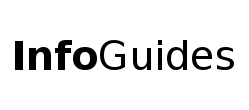

TimelineJS and StoryMapJS are products of Northwestern University's Knight Lab. Knight Lab is a team of designers, developers, students, and educators. They create open source, adaptable, and lightweight tools for storytellers and media makers.
Timeline enables users to create visually rich, interactive timelines. You will want to pick a topic that has a strong chronological narrative. The George Mason University Statue is an example of Timeline embedded into an Omeka page.
StoryMap helps you tell stories on the web that highlight the locations of a series of events. You will want to pick a topic that has a strong location narrative. Infanticide in Virginia is an example of StoryMap embedded into an Omeka page.
For both Timeline and StoryMap, you will want to have no more than 20 slides. Each event should be part of a larger narrative. You should include events that build up to the major event, and not just the major event itself. For example, if I was using either tool in an Omeka exhibit about the Titanic, I would want to include not just the sinking of the ship but also when and where it was built, the details of the first days of its maiden voyage, the rescue efforts, and the inquiries into the sinking.
See the following links for help:
Follow Knightlab's instructions for making a Timeline. They also created a video.
Ask a Librarian | Hours & Directions | Mason Libraries Home
Copyright © George Mason University